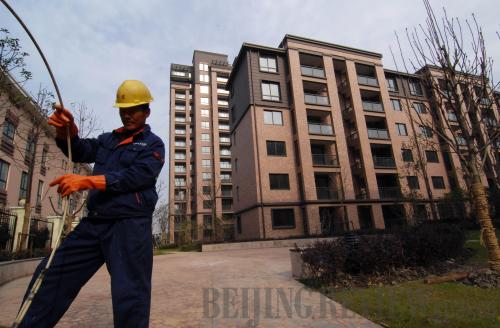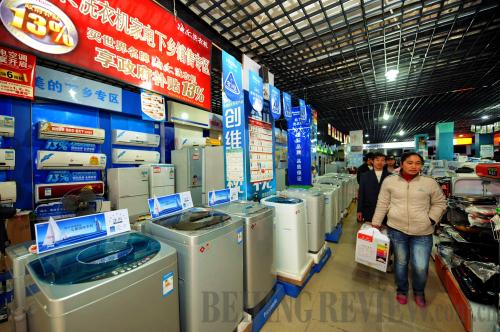|
 |
| HOUSING IMPROVEMENTS: A worker installs fiber-optic cable in an affordable housing project, the first of its kind in Shanghai (FAN XIAOMING) | The involvement of numerous industries in the infrastructure construction process has also contributed to the creation of a large number of jobs. While job losses among migrant workers were a burden for the government in 2008, we actually experienced a labor force shortage with the infrastructure construction surge this year.
Since policies were closely linked to the real economy and helped create more jobs, the Chinese economy has been restored to its targeted growth rate ahead of the rest of the world. In this sense, we can see that China's policy hit its target and will continue to exert positive influence next year.
What might be the negative influence of China's stimulus policy?
I must say that the actions China took in these harsh times have been unconventional indeed. At the onset of the financial crisis, it was impossible to tell accurately how it may affect the Chinese economy, which led to the implementation of the current extreme measures to combat the problem. What ended up happening was China supplied more money than was actually needed. On one hand, the measures successfully fueled economic growth. But on the other, the country began experiencing an increase in asset prices, specifically in the housing market, in the third and fourth quarter of this year.
As a result of industrial overcapacity, China has experienced capital withdrawal from the real economy and a steady increase in housing prices since 2004. The massive capital inflow, as a result of renminbi exchange rate reform in 2005, also pushed housing prices up, while the abundant money supply made matters worse.
To mitigate the dramatic increase in housing prices, China began to implement a series of tightening policies in 2007. But the sweeping financial crisis put a quick end to the new policies.
Because China injected a mammoth amount of money into the economy in response to the crisis, it seems all but certain to lead to a monetary oversupply. Due to the remarkable recovery of the Chinese economy, more international money is certain to flow in looking for speculative opportunities.
 |
| SPENDING SPREE: A farmer in southeast Fujian Province shops for home appliances at a local store. Since the home appliance to rural area policy was implemented in Fujian in February, sales volumes have reached 1.5 billion yuan ($223.5 million) [ZHANG GUOJUN] |
When the market is full of liquidity, we must know how to appropriately allocate the money. If properly handled, it will promote China's urbanization and innovation. If handled otherwise, it could be a spell for disaster.
China's Central Economic Work Conference, held in December 2009, outlined the country's investment strategy for the coming year, stating that China will continue to adopt proactive fiscal and appropriately accommodative monetary policies. At the same time, top policymakers also realized the necessity for minor adjustments to the macroeconomic policies and will normalize China's current stimulus package plan.
What are the prospects for the world economic recovery next year?
If no major problems disrupt the current financial trend, the world economy will experience a wave of improvement in 2010. According to the International Monetary Fund, all economies will be restored to their normal growth rates, including those heavily stricken nations such as the United States, Japan, Russia and the members of the European Union, in addition to emerging economies. The growth rate for the Chinese economy in 2010 is expected to be 9 percent, India 7 percent, Indonesia 6.5 percent and Brazil 3-4 percent.
Some basic tendencies can be expected:
First, the global economy as a whole will recover and reach an average growth rate of 3 percent. Emerging economies will fare better than developed countries. Developed countries will also recover slower than the global average.
| 